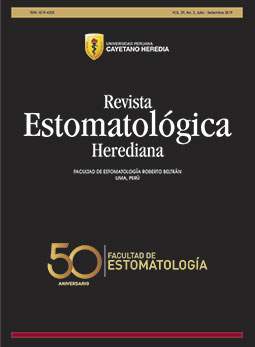Impact of caries experience on quality of life related to bucal health, Machángara, Ecuador.
DOI:
https://doi.org/10.20453/reh.v29i3.3604Keywords:
Dental Caries; adolescent; quality of life.Abstract
Objective: To associate the levels of dental caries experience with the levels of impact of oral conditions on the quality of life related to oral health. Material and methods: A descriptive, cross-sectional, relational study with a random sample of 118 schoolchildren from the Machángara parish in Cuenca-Ecuador. The DMFT index was used to measure the experience of caries and the Child-OIDP version of Peru to measure the impact on the quality of life. The 12-year-old school children who gave their informed consent and whose parents signed the informed consent were included in the study. It was authorized by the institutional committee of bioethics in the career of Dentistry of the Catholic University of Cuenca. Correspondence analysis was used to associate the categorized variables, Spearman’s Rho was also used to correlate the variables in its version of DMFT Index and Child-OIDP score. Results: There was no statistically significant correlation between the caries experience score and its impact on daily performance (Rho = -0.061), however there was correspondence between the very high level of DMFT and the very low level of impact on HRQoL and between the very low level of DMFT and the level of high impact on the quality of life related to oral health. Conclusions: The association between caries experience and quality of life is reversed in patients with high levels of DMFT.
Downloads
Downloads
Published
How to Cite
Issue
Section
License
The authors retain the copyright and cede to the journal the right of first publication, with the work registered with the Creative Commons License, which allows third parties to use what is published as long as they mention the authorship of the work, and to the first publication in this journal.























